Elemental artistry: Bill Viola unleashes a new show at Yorkshire Sculpture Park
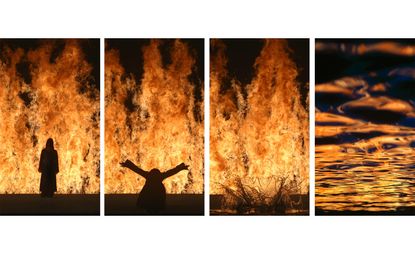
Bill Viola, a pioneer of sound and video art – and in person slight, gentle and of a spiritual bent – is a true artworld heavy weight. Any Viola show is an event. And one as large as his new show at the Yorkshire Sculpture Park is a major event.
This is Viola’s largest show in the UK in ten years, taking over the park’s wonderful Underground Gallery and, even more thrillingly, its 18th century chapel, first used as a gallery space last year by Ai Weiwei. The Viola show includes ten works, including the premier of a new piece, The Trial.
Viola is not a details man. He deals in the big issues: birth, death and the dreadful spiritual passage from one to the other. He also has a thing for the elemental, particularly fire and water.
The Trial, then, is typical Viola. Twin screens show a young man and woman; still, face forward and naked from the waste up (neither, it must be noted, are unattractive). They are deluged with various liquids from something oily and viscous, through bloody to milky to clear water. Viola calls this ‘five stages of awakening through a series of violent transformations’. (Over lunch he revealed that neither ‘actor’ was told what they were in for during the shoot. Their shock and eventual relief when the deluge ends is real.)
2005’s Tristan’s Ascension, shown in the chapel, does something similar but in reverse and to thrilling, sometimes suffocating, effect. Tristan (as in Tristan und Isolde – the piece is part of a four-hour video originally created to accompany Wagner’s Arthurian opera), lies prone on a slab until a reverse drip turns into a reverse deluge, slowly pulling him up the long, tall screen and away to who knows where.
Amidst all the high-definition, high-concept videos, the earliest work in the show, 1995’s The Veiling, seems particularly lo-fi and more effective for it. Nine sheets of cloth are hung, evenly spaced along the large gallery space. Two projectors at either end of the room beam in nocturnal images of a man, in one case, and a woman in the other. As Viola has it: 'Recorded independently, the images of the man and the woman never coexist in the same video frame. It is only the light from their images that intermingles in the fabric of the hanging veils.'
Perhaps the most affecting piece here though – and Viola is not afraid of violent emotional effect, of engaging the heart and mind – is 2007’s The Return, in which a high-definition, full-colour, middle-aged woman passes through a screen of water to become grainy and black and white. It is a passage full of pain and wonder and powerfully moving. (The Return is the second work you see in the Underground Gallery and when the trick is repeated later on, in The Innocents, its power is diminished, coming off more like a Doctor Who special effect – if one of its better, more resonant ones.)
Back in London meanwhile, Blain|Southern and The Vinyl Factory Space are going much further back into the Viola archive. Blain|Southern is showing Moving Stillness (Mt.Rainier), a mixed media work from 1979 using actual water, while The Vinyl Factory has two sound works from the same period, made in an empty swimming pool.
Wallpaper* met Viola to discuss the appeal of his work, the processes behind his films and a pervading sense of spirituality.
W*: Accessibility is a dirty word in the art world – but you are happy to be accessible?
BV: Most of my works have no words, nor do they have music. This is not a deliberate attempt to be 'accessible' but that is one of the positive byproducts of working in this way. I explore universal themes with images that everyone can recognise and because these images are moving, they draw the viewer in, resulting in a personal experience of the piece. Moving images take time, and that is what I hope I can give to the viewer; time for reflection and most importantly, for self-reflection.
You work with actors. How much do you have to do in the way of ‘directing’ and how much do you put them in a situation and watch them react? Do you have to do lots of takes?
Many of the subjects in my works are professional actors, but some are not. When they are not, or if they are inexperienced, we usually do only one take, otherwise the element of surprise in a situation cannot be repeated. I spend time getting to know the performers, discussing personal experiences and drawing out their emotions before we begin. I explain what will happen and what I would like them to do (walk through a water wall, or get doused by different coloured liquids). However, their reactions have to be their own, and that is why I prepare them ahead of time to get them in the zone. Many times an actor will tell me that what they worked on in preparation for the shoot goes out the window, and their emotions take over.
You have long had a deep interest in religion and spirituality – the various ways of understanding why we're here and where we end up. It must sadden you that religion is now something that seems only to divide people. Are there any reasons to be optimistic about our collective spiritual journey? And can art help with that?
Spirituality and religion are not always the same thing. When religion becomes dogma and a tool for power and suppression, it is no longer religion, nor is it spiritual. I have to be positive – after all, just in the last few decades Tibetan Buddhism has gone from being the religion of one small country, to being practiced world-wide, and this is religion that teaches peace and compassion. Those who wish to listen will learn and will practice. The role of the artist is to describe the human soul; this is a very important contribution in trying to figure out who we are.
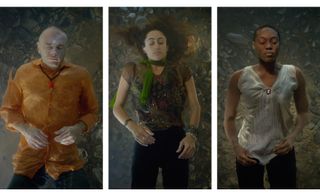

The Dreamers draws on a near-drowning Viola suffered as a child (he describes the underwater world he saw at the time, at the bottom of a lake in north New York, as the most beautiful he's ever seen)

The Dreamers in situ. Courtesy Bill Viola Studio and YSP
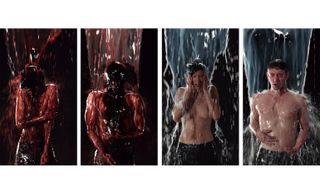
In The Trial, two young actors are sprayed with a variety of liquids, which Viola calls 'five stages of awakening through a series of violent transformations'
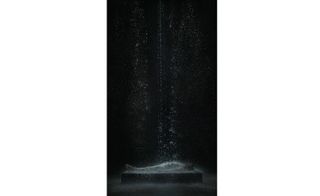
Tristan's Ascension (The Sound of a Mountain Under a Waterfall) is being shown in the Park's 18th century chapel – the video depicts Tristan (of ... und Isolde fame) lying prone on a slab until a reverse drip turns into a reverse deluge which slowly pulls him up the screen

Viola's shows constantly challenge how we perceive and view ancient questions and themes, juxtaposing history with New Media discipline in order to create a new art spectacular. Pictured: Three Women, 2008
INFORMATION
’Bill Viola’ is on view at Yorkshire Sculpture Park until 10 April 2016
Moving Stillness (Mt.Rainier) is on view at Blain|Southern until 21 November
’Bill Viola: The Talking Drum’ is on view at The Vinyl Factory Space until 7 November
ADDRESS
Yorkshire Sculpture Park
West Bretton
Wakefield
West Yorkshire, WF4 4LG
Wallpaper* Newsletter
Receive our daily digest of inspiration, escapism and design stories from around the world direct to your inbox
Blain|Southern
4 Hanover Square
London, W1S 1BP
The Vinyl Factory
16–18 Marshall Street
London, W1F 7BE
-
 Don’t Move, Improve 2024: London’s bold, bright and boutique home renovations
Don’t Move, Improve 2024: London’s bold, bright and boutique home renovationsDon’t Move, Improve 2024 reveals its shortlist, with 16 home designs competing for the top spot, to be announced in May
By Ellie Stathaki Published
-
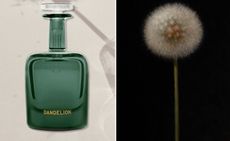 Perfumer H has bottled the scent of dandelions blowing in the wind
Perfumer H has bottled the scent of dandelions blowing in the windPerfumer H has debuted a new fragrance for spring, called Dandelion. Lyn Harris tells Wallpaper* about the process of its creation
By Hannah Tindle Published
-
 The best fashion moments at Milan Design Week 2024
The best fashion moments at Milan Design Week 2024Scarlett Conlon discovers the moments fashion met design at Salone del Mobile and Milan Design Week 2024, as Loewe, Hermès, Bottega Veneta, Prada and more staged intriguing presentations and launches across the city
By Scarlett Conlon Published
-
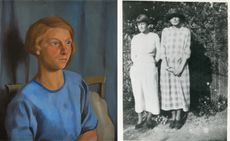 Dorothy Hepworth and Patricia Preece: Bloomsbury’s untold story
Dorothy Hepworth and Patricia Preece: Bloomsbury’s untold story‘Dorothy Hepworth and Patricia Preece: An Untold Story’ is a new exhibition at Charleston in Lewes, UK, that charts the duo's creative legacy
By Katie Tobin Published
-
 Sinta Tantra’s sculptures find a historic home at Pitzhanger Manor, UK
Sinta Tantra’s sculptures find a historic home at Pitzhanger Manor, UKSinta Tantra’s ‘The Light Club of Batavia’ exhibition at Pitzhanger Manor unites her large and small-scale works and explores the duality of beauty and colonialism
By Amah-Rose Abrams Published
-
 Jonathan Baldock’s playful works bring joy to Yorkshire Sculpture Park
Jonathan Baldock’s playful works bring joy to Yorkshire Sculpture ParkJonathan Baldock mischievously considers history and myths in ‘Touch Wood’ at Yorkshire Sculpture Park
By Anne Soward Published
-
 Kerry James Marshall donates first portrait, of Skip Gates, to Fitzwilliam Museum, UK
Kerry James Marshall donates first portrait, of Skip Gates, to Fitzwilliam Museum, UKKerry James Marshall's portrait of the literary critic, writer and filmmaker is his first of a real, rather than an imagined, sitter
By Amah-Rose Abrams Published
-
 Turner Prize 2023 exhibition unwrapped: inside Towner Eastbourne
Turner Prize 2023 exhibition unwrapped: inside Towner EastbourneThe Turner Prize 2023 exhibition has opened inside the colourful Towner Eastbourne; delve into the work of the four nominees
By Malaika Byng Published
-
 Madelon Vriesendorp’s ‘sculptural interventions and playful ideas’ at The Cosmic House
Madelon Vriesendorp’s ‘sculptural interventions and playful ideas’ at The Cosmic HouseA Madelon Vriesendorp exhibition opens at The Cosmic House in London, surprising and delighting visitors with its ‘sculptural interventions and playful ideas‘
By Will Jennings Published
-
 The best London art exhibitions to see now
The best London art exhibitions to see nowYour guide to the best London art exhibitions, as chosen by the Wallpaper* arts desk
By Hannah Silver Published
-
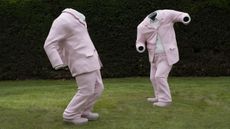 Erwin Wurm’s pop-coloured fantasy land at Yorkshire Sculpture Park
Erwin Wurm’s pop-coloured fantasy land at Yorkshire Sculpture ParkIn Erwin Wurm’s first UK museum show, ‘Trap of the Truth’, the artist transforms Yorkshire Sculpture Park into a slightly warped wonderland (10 June 2023 – 28 April 2024)
By Harriet Lloyd-Smith Published